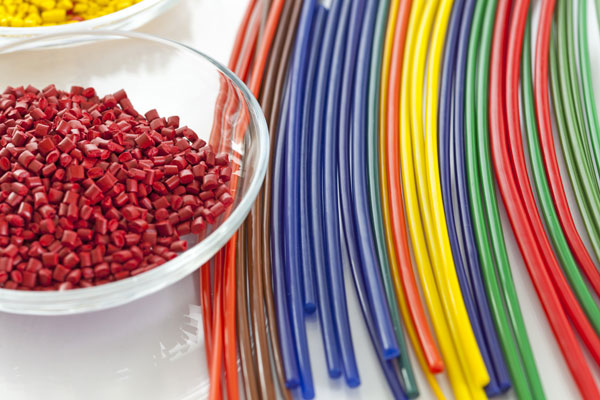Understanding Photochromic and Thermochromic Colorants in Specialty Color Compounding
 In a world propelled by innovation and sustainability, photochromic and thermochromic colorants offer a tantalizing glimpse into the future of materials science. The key to their success lies in specialty color compounding techniques, which enable these advanced colorants to be seamlessly incorporated into many applications, offering dynamic and responsive solutions. Specialty color compounding involves the precise blending and customization of colorants into polymers, ensuring that the unique properties of photochromic and thermochromic materials are maintained and optimized.
In a world propelled by innovation and sustainability, photochromic and thermochromic colorants offer a tantalizing glimpse into the future of materials science. The key to their success lies in specialty color compounding techniques, which enable these advanced colorants to be seamlessly incorporated into many applications, offering dynamic and responsive solutions. Specialty color compounding involves the precise blending and customization of colorants into polymers, ensuring that the unique properties of photochromic and thermochromic materials are maintained and optimized.
Envision a world where building facades transform with the sun's movement, clothing adjusts to temperature shifts for enhanced comfort, or packaging signals when products are at their prime. These are not just futuristic concepts but practical applications made possible by the advancements in photochromic and thermochromic colorants enhanced by specialty color compounding.
Defining Photochromic and Thermochromic Colorants in Specialty Color Compounding
- Photochromic Colorants: Photochromic colorants change color in response to light exposure, particularly ultraviolet (UV) light. When exposed to UV light, these colorants undergo a reversible chemical change, altering their molecular structure and, consequently, their color. When the light source is removed, it reverts to its original state. Specialty color compounding plays a crucial role in ensuring the optimal integration of these colorants into various substrates.
- Thermochromic Colorants: Thermochromic colorants, in contrast, alter their color in response to temperature changes. These materials can be precisely engineered to change color at specific temperatures, making them invaluable for applications where temperature indication is critical. The adaptability and precision of specialty color compounding allow for the exact tailoring of thermochromic colorants to specific applications, instilling confidence in their capabilities.
Production Processes and Outcomes in Specialty Color Compounding
- Photochromic Colorants: The production of photochromic colorants involves integrating photochromic compounds, such as spiropyrans or fulgides, into a polymer matrix. This can be done through various methods, including solution mixing, in-situ polymerization, or surface coating. Specialty color compounding techniques ensure the stability and reversibility of the color change over many cycles of light exposure.
- Thermochromic Colorants: Thermochromic colorants are typically produced by embedding thermochromic compounds, like leuco dyes or liquid crystals, into a polymer or coating material. These compounds are sensitive to temperature changes and are often microencapsulated to protect them from environmental factors and to ensure a uniform response to temperature variations. Specialty color compounding techniques, including microencapsulation, are crucial for creating reliable and consistent thermochromic materials.
Options and Variations in Specialty Color Compounding
- Photochromic Colorants
- Inorganic vs. Organic: Photochromic colorants can be either inorganic (like silver halides used in lenses) or organic (like spiropyrans). Inorganic colorants generally offer greater stability, while organic colorants provide a broader range of colors and faster response times. Specialty color compounding can optimize the properties of both types for specific applications.
- Color Change Range: Different photochromic compounds offer different ranges of color change, from clear to dark shades or from one color to another, providing versatility for various applications. Specialty color compounding ensures these color changes are consistent and reliable.
- Thermochromic Colorants
- Reversible vs. Irreversible: While most thermochromic colorants are designed to be reversible (changing back to the original color once the temperature drops), some applications require irreversible color change to permanently indicate a temperature breach. Specialty color compounding techniques can be tailored to create reversible and irreversible thermochromic materials.
- Activation Temperature: Thermochromic materials can be tailored to change color at specific temperatures, ranging from very low (for cold chain monitoring) to high (for industrial safety applications). Specialty color compounding allows for precise control over the activation temperatures of these materials.
Get the Best Specialty & Color Compounding NY has to Offer
Photochromic and thermochromic colorants represent a significant leap forward in materials science, offering dynamic, responsive solutions to various challenges. These colorants unlock many innovative applications when integrated into plastics through specialty color compounding techniques.
From improving everyday plastic products like eyewear and packaging to enabling smart plastic technologies in buildings and vehicles, photochromic and thermochromic colorants are transforming how we interact with the world. Specialty color compounding is crucial for harnessing the full potential of these colorants and ensuring their optimal performance in various plastic applications.
Related Reading





 In a world propelled by innovation and sustainability, photochromic and thermochromic colorants offer a tantalizing glimpse into the future of materials science. The key to their success lies in specialty color compounding techniques, which enable these advanced colorants to be seamlessly incorporated into many applications, offering dynamic and responsive solutions. Specialty color compounding involves the precise blending and customization of colorants into polymers, ensuring that the unique properties of photochromic and thermochromic materials are maintained and optimized.
In a world propelled by innovation and sustainability, photochromic and thermochromic colorants offer a tantalizing glimpse into the future of materials science. The key to their success lies in specialty color compounding techniques, which enable these advanced colorants to be seamlessly incorporated into many applications, offering dynamic and responsive solutions. Specialty color compounding involves the precise blending and customization of colorants into polymers, ensuring that the unique properties of photochromic and thermochromic materials are maintained and optimized.